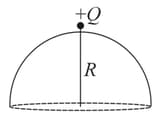Six point charges are kept at the vertices of a regular hexagon of side and centre , as shown in the figure. Given that , which of the following statement (s) is (are) correct?



Important Questions on Electrostatics
Two non-conducting spheres of radii and and carrying uniform volume charge densities and , respectively, are placed such that they partially overlap, as shown in the figure. At all points in the overlapping region
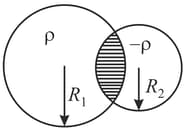
Charges and are uniformly distributed in three dielectric solid spheres and of radii and respectively, as shown in the figure. If magnitudes of the electric fields at point P at a distance R from the centre of spheres and are and respectively, then
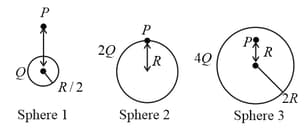
Four charge and of same magnitude are fixed along the axis at and respectively. A positive charge is placed on the positive axis at a distance . Four options of the signs of these charges are given in List-. The direction of the forces on the charge is given in List-. Match List with List and select the correct answer using the code given below the lists.
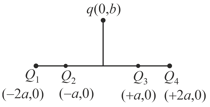
| List-I | List-II |
| P. all positive | |
| Q. positive negative | |
| R. positive negative | |
| S. positive negative |
The figures below depict two situations in which two infinitely long static line charges of constant positive line charge density are kept parallel to each other. In their resulting electric field, point charges and are kept in equilibrium between them. The point charges are confined to move in the -direction only. If they are given a small displacement about their equilibrium positions, then the correct statement(s) is (are):

Consider a uniform spherical charge distribution of radius centred at the origin . In this distribution, a spherical cavity of radius , centred at with distance (see figure) is made. If the electric field inside the cavity at position is , then the correct statement(s) is(are)
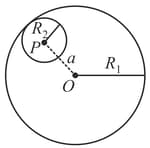
A point charge is placed just outside an imaginary hemispherical surface of radius as shown in the figure. Which of the following statements is/are correct?
